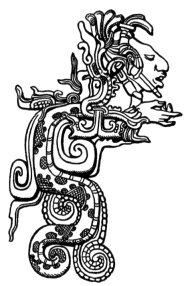There's something about Spanish Colonial silver. Except for the very finest museum pieces it is, generally speaking, quite crudely made. That isn't to say poorly- the objects are strong and good quality, but they are rudimentary and imprecise. It doesn't have outstanding design flair or superb skill in the making. It is rustic and simple, even unsophisticated.
But for all that it has a charm and incredible presence that more refined silver lacks. Much of it was made by non-specialists. That is to say, metal workers who were not exclusively silversmiths. Some were even blacksmiths! But what the Spanish Colonial smiths lacked in refinement they made up with in sheer metal. Of course, in the 16th and 17th centuries South America was the latest and greatest source of silver. With no shortage of supply in the colonies, Spanish Colonial silver, especially in the earliest periods, is usually extremely heavy.
This object is 18th century, and has really quite beautiful traces of the original gilding. The handles are made in the manner of cast examples 100 years earlier, but in the colonies fashions changed less frequently than in Europe. Furthermore, it is not too fanciful to see the influence of ancient Mesoamerican art in these handles.
I believe this piece to originate from Guatemala, or the southern part of Mexico. Much Spanish Colonial silver was left unmarked, and there was little in the way of official hallmarking. Some pieces were marked by the owner rather than the maker, and some pieces were even marked spuriously by later generations to increase their value.
This is referred to as a vase, and it is certainly vase shaped, but this is not exactly true. It's actually a spittoon! The chewing of Tobacco was common in the Americas and such a vessel was the height of fashion, even among polite society! Today the idea might seem bizarre, but these were actually passed around the dinner table so that one could dispose of one's tobacco before eating. This was considered quite normal, and did not have the stigma of uncleanliness it does today.
See more pictures and information about this rare 18th Century Spanish Colonial Silver Spittoon here.




No comments:
Post a Comment